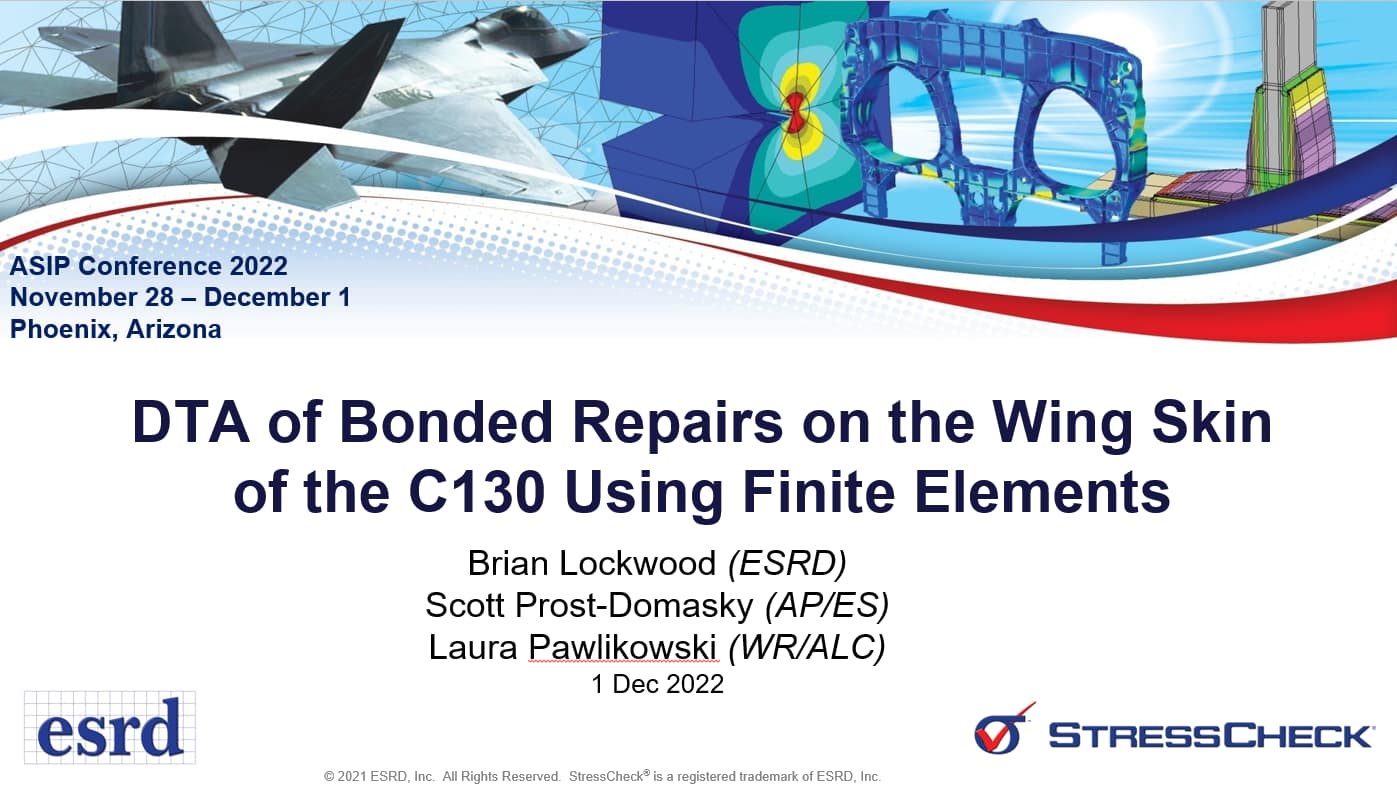DTA of Bonded Repairs on the Wing Skin of the C130 Using Finite Elements
Abstract: Current methodologies for the design and application of repairs to damaged sections of aircraft wing skin can be lacking in analytical support, relying instead on accumulated practical experience to determine the effectiveness of a given patch design. These methods are, by their nature, effective, being based on observation, but inefficient, requiring a knowledge base acquired over years of experience. This can make sustainment organizations inflexible and vulnerable to gaps in knowledge between newer members and more seasoned experts. This approach is also problematic in its potential for wasted effort and material, applying repairs that may be more intensive than is required for a given situation.
These problems can all be addressed by the introduction of an accessible, robust analysis methodology cast in the form of an Engineering Simulation Application for the verification of a repair’s performance qualities prior to an actual aircraft application. The finite element method is ideally suited to provide an analysis procedure for this type of problems that can be used by analysts with widely varying degrees of expertise both in numerical simulation and bonded repair application. This presentation will outline a proposed methodology for utilizing finite element analysis to assess the effectiveness of a given bonded repair.
Originally presented as a technical paper at the 2022 ASIP conference in Phoenix, AZ.
 Serving the Numerical Simulation community since 1989
Serving the Numerical Simulation community since 1989 





